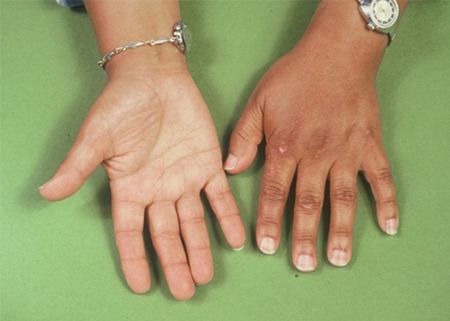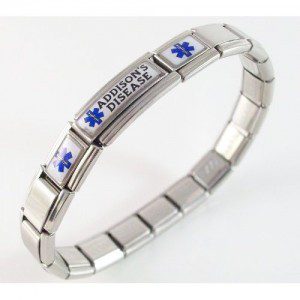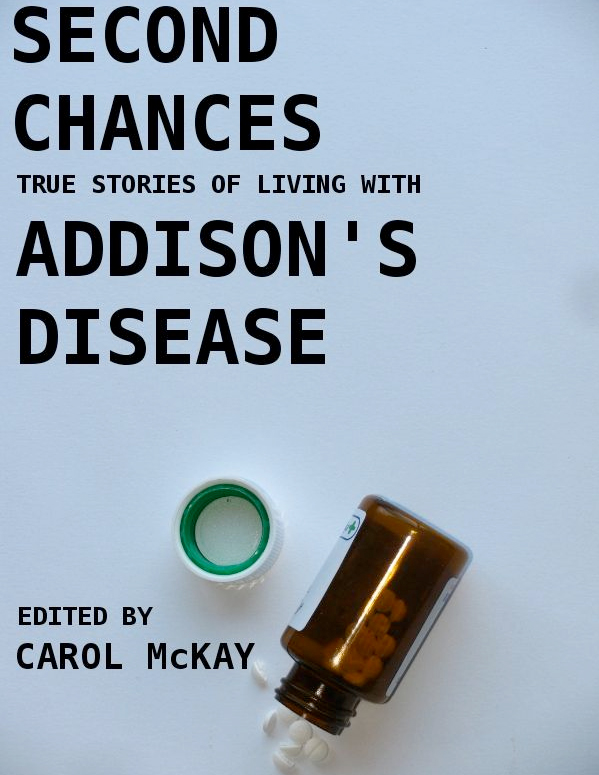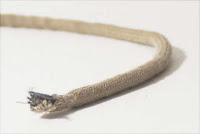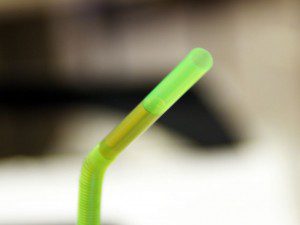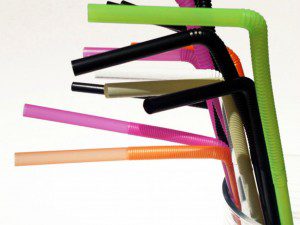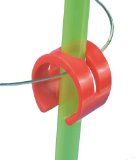Addison’s Disease Review and Radio 4 Interview
Living with Addison’s Disease
This post is about a rare disease that is often missed by doctors called Addison’s disease. To join the awareness raising International Rare Disease Day (28 February) and as part of a new “Living With” series this blog will be looking at individual diseases. They will then be given a special in-depth review. Below is a new video we have created, using a recent Healthcheck Radio 4 interview. It features an interview and a new book by Carol McKay and useful information about Addison’s Disease.
Addison’s Disease Video
There is a full transcript of the interview at the bottom of the page.
Addison’s Disease is a rare autoimmune condition that effects only 4 in every 10,000 people. There are currently around 8000 people in the UK who suffer from Addison’s Disease. Thanks to modern drugs, the condition is easier to deal with.
The main issue with Addison’s Disease is diagnosing it quickly. Unfortunately many people can go for years without a diagnosis. Symptoms often have to become very severe before it is identified by a Doctor.
Addison’s Disease Symptoms
Many people who are diagnosed with Addison’s Disease often complain of feeling unwell for many years before diagnosis.
Some of the signs of the disease can be like many ordinary problems of a busy modern life or much less dangerous illnesses. People find themselves being misdiagnosed.
At first a feeling of tiredness and weakness is the most obvious sign of the illness. With the hectic lifestyles people have nowadays it is easy to ignore these symptoms as just a part of everyday life.
However for some the tiredness can become overwhelming. So much so that it can negatively effect the way they lead their lives. This can impact upon their ability to go about everyday tasks.
Another commonly misdiagnosed symptom on Addison’s Disease is a lack of appetite. With the hustle-bustle of modern living it is easy to skip lunch or not find the time to eat a meal in the evening. However with Addison’s Disease people suffer a distinct lack of appetite that can cause severe weight loss. They also find they crave salty snacks and foods and often add extra salt to dishes at meal times.
Addison’s Disease can also cause changes in the pigmentation of the skin. This is seen as darker patches of skin in various areas of the body.
Below is a list of the most common symptoms of Addison’s Disease:
- Fatigue – feeling unmotivated and lacking energy
- Lethargy – feeling sleepy and almost drowsy
- Lack of appetite – leading to weight-loss
- Low mood – feeling irritable and mildly depressed
- Muscle weakness – lacking strength and energy
- Changes in diet – craving salty foods and an increased thirst – leading to needing to urinate more often
- Low blood sugar
- Low blood pressure
- More information about symptoms can be found on the NHS website.
Addison’s Disease Treatments
The rarity of this disease can make it difficult for doctors to diagnose Addison’s straight away. However once a diagnosis is in place treatment is relatively simple and straightforward.
The main treatment for Addison’s Disease is to replace lost hormones. This is usually given in the form of corticosteroid. This is a steroid therapy which will have to be continued for life. The steroid is usually taken twice a day in tablet form. Once the diagnosis and treatment is in place many find their symptoms disappear completely. This allows those with Addison’s Disease to carry on a healthy and normal life.
Even though the treatment of Addison’s Disease is simple, it is important that you continue to take your medication as directed. Finding yourself in a situation where you can not access your medication can be very serious. That is why it is important that you carry your medication with you everywhere. It is a good idea to pack extra tablets if you are going on holiday and to keep them safe in your hand luggage.
If you are unable to access your medication or are unable to take it yourself, medibands and medical alert bracelets can provide extra piece of mind. These medical alert bracelets are relatively cheap yet could be priceless in an emergency situation. Also available are digital/electronic, waterproof MediRead bands that are scanned with an app, and can store more complex information about your health and conditions, such as your name, GP details, emergency contact numbers, medications, and more.
Addison’s Disease Home Remedies
Some home remedies can provide comfort and relief to muscle pain caused by Addison’s. Keeping to a healthy diet is always recommended for good health, and even more so with Addison’s Disease. Ensuring you stick to your five a day can boost energy levels. Also drinking plenty of water can go some way to stop the feeling of tiredness and lethargy.
Massage
It has been noted that massage can help the muscular and joint pain cause by Addison’s Disease. It is best to avoid massages that are intense or involve stretching. However more gentle massage techniques can prove helpful. Taking the time to visit a specialist in massage for muscular conditions may not only help to relieve pain, but also help you to de-stress.
Addison’s Disease and Licorice
Liquorice that contains liquorice root has the ingredient glycyrrhizinic acid in it that may help in Addison’s disease because it can lower potassium, increase blood pressure, and boost mineral corticoid levels. Not all licorice-type sweets contain licorice root extract or glycyrrhizinic acid and so do not work in the same way. There are over-the-counter preparations of liquorice root extract available in the form of lozenges or in tea.
Licorice may help the steroid Cortisone to work
Anything that stops the body breaking down Cortisone, the main treatment for Addison’s disease can help. Glycyrrhizinic acid from licorice has been found by researchers to do this. It has long been a herbal remedy for the disease. Research has found it inhibits an enzyme responsible for inactivating cortisol in the kidney. Eating licorice makes the cortisol in the blood last for longer. A review in “Experimental and Clinical Endocrinology” describes a case study in which licorice had an “excellent” and prolonged effect in Addison’s disease and argued that licorice therapy should be used in the treatment of this disease. Researchers also found grapefruit can have a beneficial effect.
Living with Addison’s Disease
Living with Addison’s Disease before diagnosis can be life-threatening and life-changing. However once a diagnosis is in place many people feel they can finally continue on with their life as normal.
The most important aspect of managing Addison’s Disease is ensuring the correct medication is taken daily. Keeping on top of your condition and the dosage of medication is also very important. Although the initial dosage prescribed can solve most symptoms straight away, over time this may change.
That is why it is important that those with Addison’s Disease make regular visits to their GP for check-ups. As Addison’s is an auto-immune disease, it can lead to the development of related conditions such as hypothyroidism and diabetes.
More information on living with Addison’s Disease can be found here.
In Carol McKay’s new e-book entitled “Second Chances: True Stories of Living with Addison’s Disease“, she compiles the stories of Addison’s Disease sufferers from around the world.
Most notably is the account of Hilary Richardson – a Canadian-born Addison’s sufferer who was only 10 years old when she was diagnosed back in 1955.
At this time, it was almost impossible to obtain the necessary hormone replacement therapy in tablet form. Instead, her father would have to purchase powdered pigs’ glands for her to take to keep her condition stable.
Thankfully due to modern science, hormone replacement therapy is now cost effective and available in tablet form.
More books about living with Addison’s Disease:
Addison’s Disease in Dogs
Lastly, Addison’s Disease can also effect dogs. The disease causes very similar symptoms as it does with humans. Weakness, vomiting and lack of appetite are usually the symptoms that dog owners notice first. However, it can be even harder to detect in canines than in humans. Addison’s in dogs can go undiagnosed for many years, only being discovered once the dog is in very poor health.
If the disease is discovered early enough, it can be treated with steroids however it is best for the dog to avoid stressful situations to stop further flare-ups.
Carol McKay True Stories of Living with Addison’s Disease.
As mentioned in the video, a new book has been compiled with many real life stories about people with the disease. It has been reviewed on Amazon:
Reviews of Carol McKay’s new e-book:
This book was recommended on the Addison self-help web site. The true stories of fellow sufferers is fascinating and eye opening in to the good and bad side of the medical profession and how we as sufferers of this disease cope day-to-day.
Rose_claudette@hotmail
I read this whilst still in hospital coming to terms with my diagnosis. I couldn’t recommend it highly enough, well worth a read early on – MissLean
To find out more about Addison’s Disease and support groups we recommend visiting Carol McKay’s Facebook and Blog. If you can suggest other useful groups, blogs or resources lease leave a comment in the box below. If you’d like to help us create another post about an illness that you would like to help raise awareness of, please get in touch.
Transcript of Radio 4 Interview
00:00 Claudia Hammond: Hello, I’m Claudia Hammond and this is Health Check from the BBC. On today’s program, a rare condition which often isn’t diagnosed until it’s an emergency.
00:09 Carol McKay: Because it’s quite a rare disease, doctors don’t have it at the forefront of their mind when they are checking you and they think you’re all right, and then suddenly, you have a catastrophic collapse, your blood pressure is low, blood sugar is low. And you become very, very seriously ill.
00:25 CH: We hear experiences of Addison’s disease from around the world. When you go to your family doctor to find out what’s wrong with you, they’ll listen to your symptoms, examine you and then order any test they might need. But some conditions, especially when they are rare, are harder to diagnose than others. And with Addison’s disease, which only affects four in every 10,000 people, many don’t discover they’ve got it until it’s an emergency. It’s an autoimmune disease that disrupts the production of hormones by the adrenal glands and although the condition is life long, it is treatable with steroids. When Carol McKay was faced with the condition, she used social networking to find out how other people managed. The result is a an ebook called “Second Chances”, where patients from Belgium to South Africa and Australia to Canada recount their stories of living with Addison’s disease. When I spoke to Carol, she told me how she eventually realized what was the matter with her.
01:21 CM: I knew I had been not well for about a year. I felt anaemic, I had no energy. I was carrying on with my life, but I just had no energy. I went to the doctor to get checked to see if I had anemia or something else, and they did a few blood test and didn’t pick anything up. They were looking for thyroid and other things like that, because if you have one autoimmune disease, you are more likely to have another one. And I have Celiac disease, which is an autoimmune disease. So, they were looking for things, but didn’t see them. And then, a few months later, I was checked for my blood pressure and it was surprisingly low, but not dangerously low at that stage. So, again it didn’t ring any bells with the doctor. And then one weekend, I got a tummy bug, and my body just couldn’t come back from that and I was losing feeling in my arms and legs and in my lower jaw. And I was taken to hospital and fortunately, the medical stuff there recognized it and I was treated very quickly. It’s a very simple disease to treat because it’s like thyroid, you need replacement hormones.
02:26 CH: And looking at some of the experiences that people recount in your book, they do seem to be often, almost quite close to death by the time they get to diagnosis or certainly very seriously ill and… I was struck by the story of Jasmine, who is from the UK, and she was diagnosed just 12 days after her second baby being born, which must have been an appalling situation.
02:48 CM: Yeah, she’s wonderful. And her story is scary, but it’s actually really uplifting because… Well, she had suffered terribly. It was her second pregnancy. She knew what to expect in her pregnancy. But this one was really bad, she just felt really awful. And then after the baby was born, she was still really, really exhausted, more tired than she thought she should have been. But what’s uplifting about Jasmine’s story is that her doctor thought about her after she had been to see her, and actually turned up at her door and said, “Look, we’re really concerned. I’ve looked at your blood results. Please go to the hospital tomorrow morning and get checked out.” And then an hour later, she actually phoned, the doctor was on her way home, and she had suddenly realized. The Addison’s light bulb came onto her head, and she thought, “Oh, that’s what it is.” And that’s what saved Jasmine’s life.
03:39 CH: So, she was lucky that she had such a good doctor…
03:40 CM: She was…
03:41 CH: She suddenly made that connection and guessed what it was.
03:43 CM: She was very lucky.
03:45 CH: What made you want to collect together all these stories and publish them as an ebook?
03:51 CM: Well, I was very shocked by having my own diagnosis, because it’s quite rare. I needed to hear how other people had coped with it. So, I joined the Addison’s Disease self-help group, which is a charity in the UK and I found a lot of support from them. I also found support from Facebook. I’m a writer and I teach creative writing, and therefore, I wanted the whole story. I liked to hear what led up to it, how had they coped with the diagnosis and how they had a normal life afterwards? So, I set about to compile, I got 16, including my own, 16 stories. And they came from the States, Canada, Belgium, the UK, South Africa, Australia, South Korea. And I was really, really pleased to hear all these different stories. Everybody’s different, but they all, as you said, most of them were very close to death. It helped me, reading them, and I hope it helps other Addison’s sufferers, but it also raises awareness, and that’s really important to me.
04:53 CH: One of the stories is from Hilary, and she lives in Canada and was diagnosed right back in 1955, and she was only 10 years old.
05:03 Speaker 3: For some time, I had been adding teaspoonfuls of salt to every meal. I also ate very meagrely. Not only was I scrawny, but winter or summer, my skin was a dark color which looked odd with my fair hair. “Your elbows and knees are still dirty, you haven’t scrubbed them well enough,” my mother would complain. Little did she realize that the dark skin, the craving for salt, and the reluctance to eat were all symptoms of Addison’s disease. I was often ill and had missed a lot of school. My doctor thought a routine tonsillectomy might help, but I didn’t come around from the anaesthetic. It was after dark on Tuesday evening, when an internal medicine specialist climbed the grey limestone steps of the hospital. I’d been in a coma for more than three days, and had not moved nor opened my eyes since my operation. The specialist hooked up an IV containing a different substance to see what would happen. This is how I obtained my diagnosis.
05:58 S3: In 1949, Cortisone in pill form was produced commercially. But in 1955, in our small town in Canada, we couldn’t get these tablets. Treatment for me was desiccated pig’s adrenals. Every week, my father and I would go to the home of a man who had obtained the adrenals from a slaughter house. We carried the precious brownish grey powder home. The quality of the material varied week to week. Sometimes it worked very well and sometimes hardly at all. Luckily, within a year, my father was able to obtain hydrocortisone pills on a trip to the US. And before long, pills became available in Canada as well and my treatment now seemed very easy.
06:37 CH: So, quite a dramatic start for Hilary there in finding out that she got the disease and what happened to her.
06:44 CM: Yes. She was lucky. And if she’d been born 10 years earlier, she would probably have died. People still do die nowadays, even in the developed nations, they still die from it because it’s not picked up in time. And I’m sure there must be people all around the world who don’t have access to modern medicine easily who still suffer from it, but the pills themselves are fairly inexpensive.
07:07 CH: So, it’s more about the awareness of the disease than the pills themselves and access to those.
07:10 CM: Exactly. Yes.
07:11 CH: It’s that people have gotta get that diagnosis somehow.
07:14 S3: Yes.
07:15 CH: And what impact has it had on you life now that it is well controlled for you?
07:20 CM: It’s well controlled, but I still don’t have a lot of energy. For example, to come to this interview today, I had to take an increased dose of my medicine to cope with the stress.
07:30 CH: Really? That’s quite interesting.
07:32 CM: Yeah.
07:32 CH: So, you’ve got to plan in advance when you think you’re gonna be stressed, which…
07:35 CM: Yes.
07:35 CH: You can do if it’s an interview ’cause that’s arranged in advance. But everyday life’s not quite like that, is it?
07:40 CM: No. Because even a simple bump in a car, not even a serious bump, but something like that can cause the body to go into shock.
07:49 CH: And then what would happen to you? So if you hadn’t touched your dose today and were then feeling anxious, what would happen?
07:54 CM: It would affect my blood pressure and my blood sugar and I would start to get weak and collapse. In a more serious case, if I fell and broke my ankle, for example…
08:03 CH: Yeah.
08:04 CM: Then, I carry an emergency injection kit, so I have to give myself an intramuscular injection, to give myself a large dose, so that I don’t just fade away and die, really.
08:15 CH: Carol McKay and the latest version of her ebook of stories, “Second Chances”, is out this week. Next week I’ll be in Norway for the BBC and so Dr. Kevin Fong will be here…
Comments from twitter:
@lwdisability I wonder how many people may have been misdiagnosed with #cfs, #fibromyalgia or #ME instead of #Addisons?
— rowanmaya (@rowanmaya) February 27, 2013

